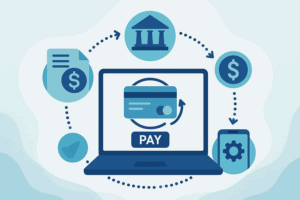
Who remembers when “working from home” was code for “taking a sneaky day off”? Toss those ideas out the window. It’s 2025, and the hybrid workplace has different rules. Employees swivel between office desks and living room couches with the same aplomb. But with great flexibility comes great responsibility — and rights. In this new work paradigm, it’s vital to know where you stand.
Transparency: The Bedrock of the Hybrid Model
Employers love a good secret. But keeping everybody in the dark isn’t good for anybody. In a hybrid setup, transparency is king. Employees deserve clear expectations about duties, deadlines, and work hours. A muddled approach can lead to confusion, mistakes, and — let’s be honest — frustration. Crystal-clear communication is not a luxury. It’s what keeps the ship steady.
It also establishes trust, laying the groundwork for a harmonious work environment. Instead of fostering disconnect through incomplete communication, sharing all pertinent information levels the playing field for everyone. This mutual transparency makes it more feasible for employees to thrive, mitigate misunderstandings, and revel in the autonomy that hybrid work provides.
As the workforce continues to change, it’s necessary to address potential challenges that can arise. Especially around reasonable accommodations for employees with disabilities in hybrid settings. For more insight on this, you may consider reading about ADA return to work accommodations. This can provide guidance for human resource teams to ensure a smooth, respectful integration into hybrid work environments.
Flexible Hours: A Non-Negotiable
Rigid 9-to-5s went out like bell-bottom jeans. Instead, we embrace a world where productivity isn’t measured by hours in a seat. Hybrid work allows employees to thrive within their natural rhythms. But here’s the crux: employers should respect this flexibility. When your work is done on time, does it matter if you did it at 3 AM? Right, thought so.

Moreover, empowering staff to choose their optimal working hours can lead to increased job satisfaction and reduced burnout. A personalized approach to work rhythms helps unleash creativity and enhances mental well-being, creating not just a happier workforce but a more productive one. This approach translates into employees who are invigorated and consistently meet or exceed expectations.
A Fair Compensation Game
Work isn’t charity. Whether from an ergonomic desk or a kitchen island, employees should receive wages reflecting their contribution, not location. A cheeky move to underpay remote workers could backfire spectacularly. Talent will migrate to where it feels valued — not just financially, but with benefits that match those given to traditional office goers.
Equal Opportunity for All
Remote setups have blurred lines. Out-of-sight shouldn’t mean out-of-mind when it comes to promotions and opportunities. The office favorite who chums it up in the breakroom shouldn’t have a leg up on their remote colleagues. Organizations must guarantee inclusive practices, ensuring everyone gets an equal shot at the brass ring.
Promoting an ethos of inclusion requires intentionality and regular check-ins, providing transparent promotion criteria available to all. Conducting unbiased evaluations ensures every employee feels seen and valued, not only strengthening morale but enhancing team cohesion. Emphasizing virtual connections—through events, collaboration tools, or team-building activities—ensures relationships across distances are maintained.
Data Privacy Isn’t Optional
Hybrid work unwittingly exposes personal data like a door left ajar. Employees need assurance that their digital footprint isn’t getting trampled on by nosy parties. Companies should unveil ironclad strategies safeguarding everything from emails to sensitive HR documents. Trust is everything, and safeguarding data fortifies that trust.
Feedback: The Bridge Across Two Worlds
Feedback encourages growth. Whether glowing or constructively critical, feedback steers employees towards improvement. The company compass must guide workers in their hybrid journey. Regular assessment helps replace uncertainty with knowledge. Keeping lines open ensures no one’s lost in a virtual wilderness.
Timely feedback, however, is only part of the equation—it’s the follow-up actions and support structures that enable continual employee advancement. Small gestures, like acknowledging employees’ achievements or celebrating small wins, not only boost morale but also strengthen the workplace culture. Building an ecosystem that rests on honest dialogue and actionable feedback will drive the collective success of both individuals and the organization.
Respect For Home Life
Home isn’t an extension of the office, contrary to some employers’ beliefs. Hybrid setups blur work-life borders, but not arbitrarily. The “always-on” mindset harms mental well-being. Respect for employees’ time is paramount. Anxiety spikes with an inbox flooded on weekends or pings till midnight. A respectful boundary policy prevents burnout.
This respect extends beyond mere work hours—it involves understanding and accommodating personal circumstances. Open dialogue about family or caring responsibilities should be encouraged, enabling employees to freely arrange their work obligations. Respect is a two-way street, ensuring both parties can harmoniously coexist even in the most demanding work environments.
Conclusion
Hybrid work models sprouted from necessity, but they aren’t going anywhere. As this style of work becomes standard, employees and employers need to engage in vigilant practices, safeguarding rights and well-being. Collaboration is key, and a focus on ensuring everyone plays by the same rules fundamentally changes the future of work. Now, more than ever, it’s about time we gave employee rights the center stage they’ve always deserved.













